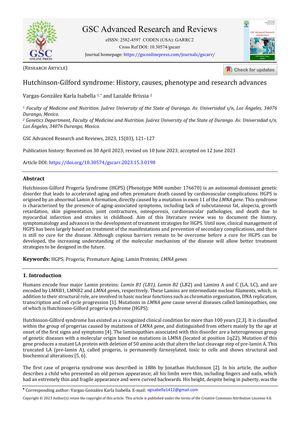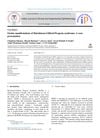Hutchinson-Gilford Syndrome: History, Causes, Phenotype and Research Advances
June 2023
in “
GSC Advanced Research and Reviews
”

TLDR Hutchinson-Gilford Progeria Syndrome causes rapid aging from a genetic mutation, with no cure but ongoing research into potential treatments.
Hutchinson-Gilford Progeria Syndrome (HGPS) is a rare genetic disorder causing accelerated aging due to a mutation in the LMNA gene, which produces an abnormal protein called progerin. Symptoms include growth retardation and alopecia, with a median death age of 13 years from cardiovascular complications. Although over 100 scientific articles have been published since the gene's discovery in 2003, there is no cure, and treatments are symptomatic. Promising research includes the use of protein farnesyl-transferase inhibitors (FTIs) like lonafarnib in mice and gene editing techniques such as CRISPR/Cas9, but ethical and translational challenges to human patients remain. Only 14% of studies have been conducted on human subjects, emphasizing the need for more human-based research. Current management of HGPS involves a multidisciplinary approach to treat symptoms and prevent complications, with the hope that future advances may lead to a cure.

